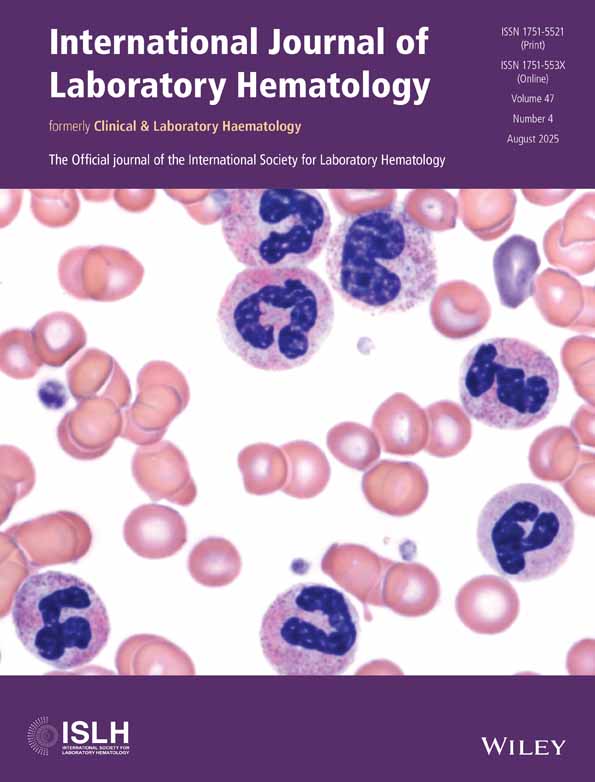Development and Validation of a User-Friendly Predictive Model Using Demographic and Complete Blood Count Data to Facilitate Early Diagnosis on Suspicion of Myeloproliferative Neoplasms
Funding: The authors received no specific funding for this work.
Lilan Jin and Lei Li contributed equally to this work.
ABSTRACT
Objective
To develop a novel predictive model based on demographics and complete blood count (CBC) parameters to quickly identify suspicious features of myeloproliferative neoplasms (MPN), enabling prompt initiation of further investigations and referrals.
Methods
426 patients with elevated peripheral blood cell counts were referred to the Hematology Department of Ruijin Hospital from 2017 to 2023. Among them, 215 patients were diagnosed with MPN, while the remaining 211 patients formed the non-MPN group. The patients were randomly divided into a training cohort and a validation cohort. Demographic characteristics, CBC data, and other relevant laboratory information were collected. By univariable and multivariable logistic regression, significant indicators independently associated with MPN were identified and included in the nomogram. The model was evaluated by measuring the area under the receiver operating characteristic curve (AUC), calibration curve, and decision curve analysis (DCA) curve.
Results
Five indicators were identified as independently associated with MPN, including onset age, monocyte fraction, basophil fraction, red blood cell distribution width, and platelet count. The AUC values for the training and validation cohorts were 0.912 and 0.928, respectively. The calibration curves showed good agreement between the predicted risk by the nomogram and the actual outcomes. The DCA for the training and the validation datasets revealed net benefits of 0.9026 and 0.9303, respectively.
Conclusion
We have developed and validated a prediction model for MPN based on demographics and CBC data. The model could assist general practitioners in quickly identifying patients with potential MPN and in initiating timely further investigations and referrals.
Conflicts of Interest
The authors declare no conflicts of interest.
Open Research
Data Availability Statement
The data that support the findings of this study are available on request from the corresponding author. The data are not publicly available due to privacy or ethical restrictions.




